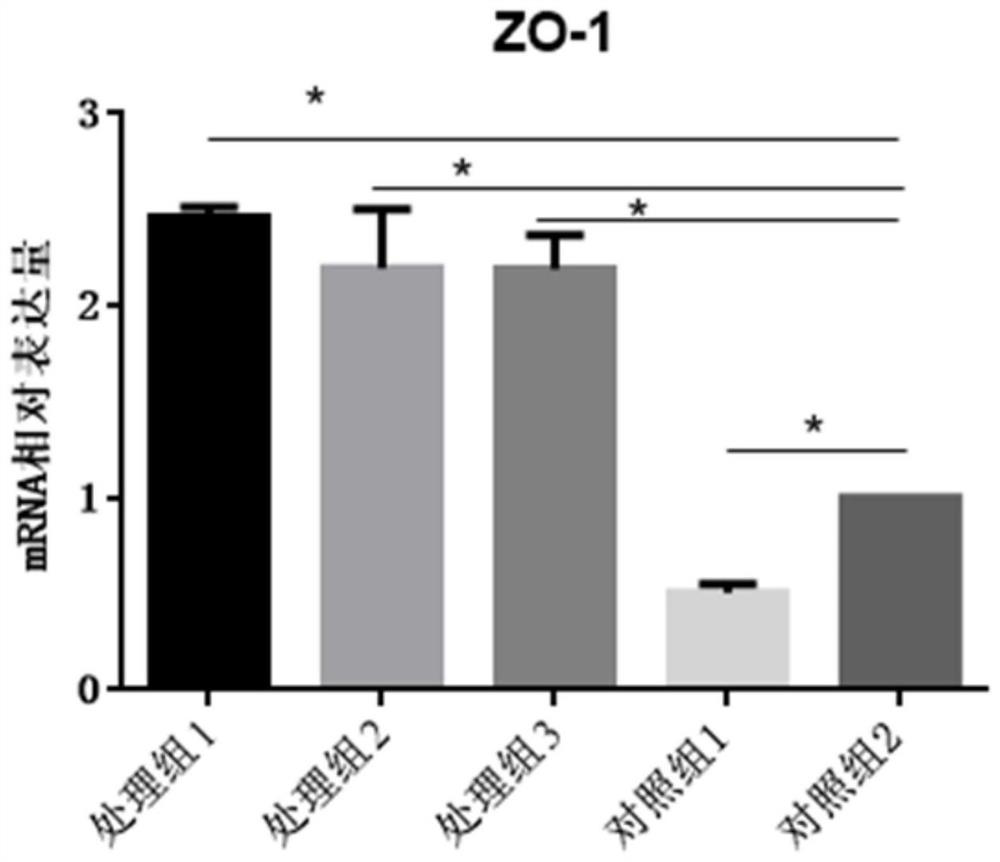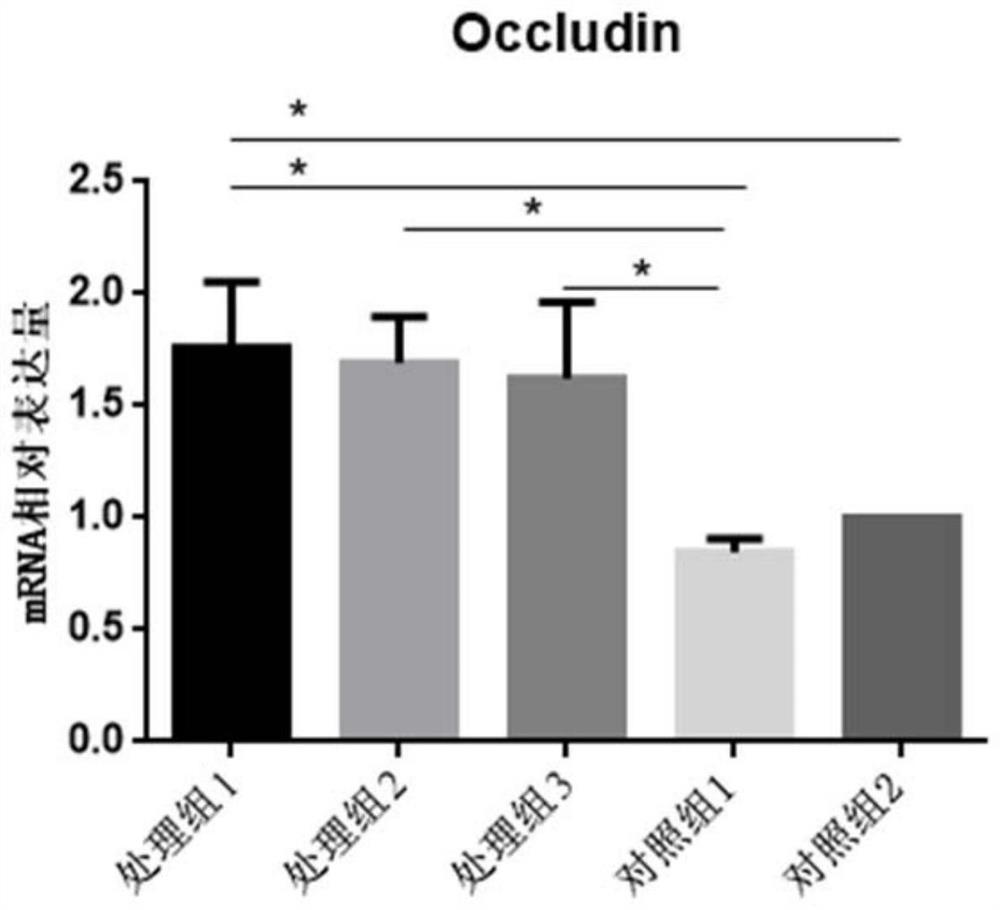Milk product feed, and preparation method and application thereof
A dairy product and feed technology, applied in the field of piglet breeding, can solve the problems that pig milk cannot meet the growth needs of piglets, and achieve the effects of reducing equipment costs and manpower input, improving stability, and shortening the shelf life
- Summary
- Abstract
- Description
- Claims
- Application Information
AI Technical Summary
Problems solved by technology
Method used
Image
Examples
Embodiment 1
[0045] In the present embodiment, the preparation method of dairy product feed is:
[0046] (1) According to the mass percentage content, 75% fresh pure milk, 10% wheat flour, 7% lecithin, 4% potassium sorbate, 1% DHA, 0.5% mannitol, 0.5% sodium glutamate, 0.5 % glucosamine chondroitin powder, 0.25% active lactic acid bacteria dry powder, 0.25% yeast dry powder, add 1% DHA brown algae dry powder, and stir evenly at 25°C for 1 hour to prepare brown algae milk suspension.
[0047] (2) Heat the brown algae milk suspension to 36° C. and stir slowly for 6 hours to fully ferment the two kinds of probiotics.
[0048] (3) After the brown algae milk suspension is passed through a 120-mesh sieve, the bubbles of the mixed solution are sucked away by vacuum suction to improve the stability of the finished product.
[0049] (4) Prepare 1g / L of CaCl 2 Solution: CaCl 2 Add the powder into hot water at 80°C and stir for 15 minutes until the powder is completely melted.
[0050] (5) Drop t...
Embodiment 2
[0053] The experiment adopts a single-factor experiment design, and the test selects 40 lactating piglets with similar body weight, health, similar genetic basis, similar body length and body height, and 14-day-old binary cross (growth) and are randomly divided into 4 groups. Each group has 10 repetitions. The four groups are: control group, treatment group 1, treatment group 2, and treatment group 3. Treatment groups 1 to 3 were fed the feed of Example 1, but the feeding methods were different, and the control group was fed with natural sows' milk.
[0054] Treatment group 1: The lactating piglets were artificially fed the feed of Example 1 in the morning for 14 days from birth, and the piglets were allowed to eat breast milk freely in the afternoon for 7 consecutive days until the piglets were 21 days old;
[0055] Treatment group 2: 14 days from birth, the lactating piglets were allowed to eat breast milk freely in the morning, and artificially fed the feed of Example 1 in...
Embodiment 3
[0073] The experiment adopts a single-factor experiment design, and the test selects 50 lactating piglets with similar body weight, health, similar genetic basis, similar body length and body height, and 14-day-old binary hybridization (growth) and are randomly divided into 5 groups. Each group has 10 repetitions. The five groups are: control group 1, control group 2, treatment group 1, treatment group 2, and treatment group 3. Treatment group 1 to treatment group 3 were fed the feed of Example 1 respectively, but the feeding methods were different; control group 1 and control group 2 were fed with natural sow milk, but control group 1 was added aureomycin every day.
[0074] Treatment group 1: The lactating piglets were artificially fed the feed of Example 1 in the morning for 14 days from birth, and the piglets were allowed to eat breast milk freely in the afternoon for 7 consecutive days until the piglets were 21 days old;
[0075] Treatment group 2: 14 days from birth, th...
PUM
 Login to View More
Login to View More Abstract
Description
Claims
Application Information
 Login to View More
Login to View More - Generate Ideas
- Intellectual Property
- Life Sciences
- Materials
- Tech Scout
- Unparalleled Data Quality
- Higher Quality Content
- 60% Fewer Hallucinations
Browse by: Latest US Patents, China's latest patents, Technical Efficacy Thesaurus, Application Domain, Technology Topic, Popular Technical Reports.
© 2025 PatSnap. All rights reserved.Legal|Privacy policy|Modern Slavery Act Transparency Statement|Sitemap|About US| Contact US: help@patsnap.com



